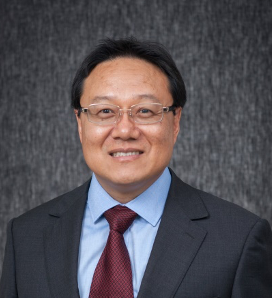October 13, 2021
2:00pm – 3:00pm
All Roads Lead to Rome: Diverse Mechanisms of Nanomaterial-Induced Cell Death
 Tian Xia, MD, PhD
Tian Xia, MD, PhD
California NanoSystems Institute, Department of Medicine, UCLA
About the lecture: Different nanomaterials can induce different types of cell death in the same cell type, including apoptosis or pyroptosis. We screened a library of metal and metal oxide nanoparticles and 2D graphene oxides, and found Ag, ZnO, CuO, V2O5 could induce apoptosis while GO, fumed silica, and rare earth oxide nanoparticles could induce pyroptosis. A detailed study found SiO2 and V2O5 could both induce caspase 1 and 3 activations, which are responsible for pyroptosis and apoptosis, respectively. But how do they decide to go one way but not the other way? We found SiO2 induced caspase 1 activation could result in pyroptotic cell death faster than caspase 3 induced apoptosis. For V2O5, caspase 1 activation came after caspase 3 activation, which leads to apoptosis although there is also caspase 1 activation and IL-1β production. Data showed that cell death by nanomaterials is dependent upon material properties and the temporal activation of cell death pathways.
About the speaker: Dr. Tian Xia works in Division of NanoMedicine, Department of Medicine at University of California, Los Angeles (UCLA). His main research area is on the development of safer engineered nanomaterials for biomedical applications. High throughput screening is the main approach for his research with the goal to build structure-activity relationships (SARs). His has established SARS for over 100 different nanomaterials covering the major material categories including carbonaceous materials (fullerene, graphene, carbon nanotubes (single-, multi-walled)), metal (Au, Ag) and metal oxides (transition metal oxide, rare earth oxide), silica, III-V materials, and 2D nanomaterials including graphene oxide, MoS2. Research findings have been used for safer design of nanomaterials for biomedical applications including adjuvant, particles that can induce immune tolerance, and antimicrobials based on these structure activity relationships. He is a Councilor in Southern California Chapter of Society of Toxicology and he is Associate Editor in Nanotoxicology, a flagship journal in the field. He has published over 150 articles with total citation over 48,000 and H factor of 70 in Google Scholar and he was named Highly Cited Researcher in Chemistry in 2016, 2018, 2019 by Web of Science of Clarivate Analytics.
Supported by the UCLA NIEHS Training Grant in Molecular Toxicology T32ES015457.
Questions? Email coeh@ph.ucla.edu

